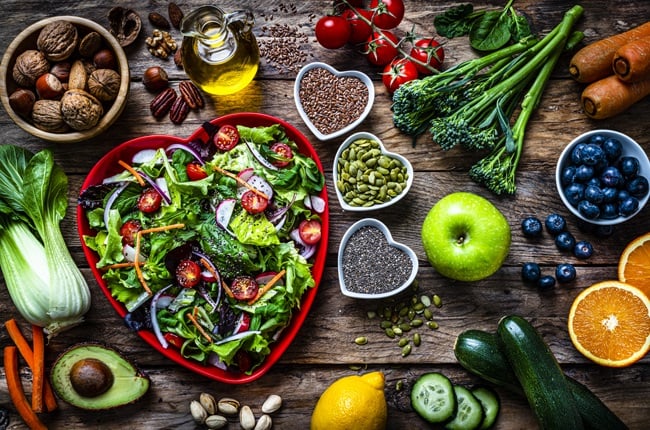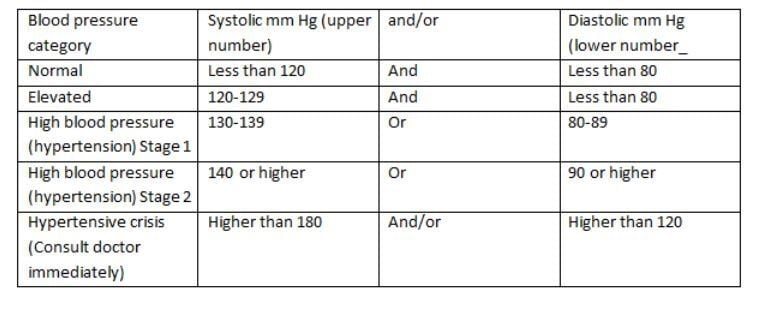
- Labelled "the silent killer", high blood pressure is a significant cause of premature death globally.
- The DASH diet is an evidence-based way of eating designed to help treat or prevent high blood pressure.
- Research shows that following a DASH diet alone is enough to reduce blood pressure by 6-11 mmHg.
On 17 May, World Hypertension Day is observed. High blood pressure affects around 1,28 billion adults between 30 and 79 and is a significant cause of premature death globally and in South Africa. An estimated one in three adults in our country lives with high blood pressure, and it's responsible for one in every two strokes and two in every five heart attacks.
Labelled "the silent killer" due to the lack of clear symptoms, the good news is that there are ways to reduce our risk of developing high blood pressure and managing it if diagnosed. One such way is by modifying our diet, which has recently become a key focus for dieticians and physicians in preventing and treating the condition.
But what exactly is hypertension?
Simply put, think of blood pressure as a weight your heart must lift. If the weight is too heavy, the heart muscle cannot lift the load, resulting in fatigue or heart failure.
Hypertension is defined as a systolic blood pressure consistently above 140mmHg and/or diastolic blood pressure consistently about 90mmHg (see table below for more detail).
As it is the number one risk factor for heart disease, stroke, kidney (renal) complications and premature death, it is important to monitor your blood pressure because, in many cases, it can be prevented and managed through regular testing and treatment. If you don't know your current blood pressure, having it checked with a doctor or nurse at a pharmacy is well worth it. The Heart and Stroke Foundation South Africa recommends checking your blood pressure at least once a year. Those with risk factors such as obesity or a family history should have it checked more often. Speak to your doctor about your risk.
READ MORE | Would you know if you had a 'silent killer'? Untreated, these conditions could cause long-term damage
A Dietary Approach to Stop Hypertension (DASH)
The Dietary Approaches to Stop Hypertension (DASH) diet is an evidence-based way of eating designed to help treat or prevent high blood pressure. This flexible dietary approach emphasises the intake of fruit, vegetables, low-fat dairy, whole grains, lean meat and nuts and reduces the consumption of ultra-processed foods high in salt (sodium). This way of eating is considered the gold standard for hypertension treatment and prevention.
Research indicates that following a DASH diet, without making other lifestyle adaptations (more exercise and less smoking and alcohol), is enough to reduce blood pressure by 6-11 mmHg.
Salt and DASH
But how much salt is too much? Eating higher than the recommended 2 000 mg of sodium per day puts us at risk of developing hypertension. To put it in context, 1 teaspoon (5 g) of salt contains approximately 2 000 mg of sodium. One teaspoon of salt may not seem much, but we easily consume this when preparing food or adding salt to food at the table. Those who suffer from hypertension may want to aim for even less sodium in their diet; hence some versions of the DASH diet focus on lowering sodium intake as low as 1 500 mg per day.
As we don't only get the salt from that which we consciously add to food, the DASH diet cautions against ready-to-eat and ultra-processed foods and spices. Deli meats, sausages, biltong, bacon, cheese, burgers and salty snacks like chips, pretzels, crackers and salted nuts often contain high amounts of sodium. Many flavourants, such as braai spices, stock cubes and vegetable seasonings, also contain high amounts of sodium. It's thus easy to eat more than your sodium limit a day if you regularly consume these foods.
READ MORE | Stop adding salt to your food at the table - Study says it makes a huge difference to heart health
What is the hype around salt?
An excessive intake of salt, defined by the World Health Organisation (WHO) as greater than 5g per day (or 2 000 mg sodium), has shown a considerable increase in blood pressure and is directly linked with the development of high blood pressure and, subsequently, heart disease.
When you eat a salty meal, your body responds by holding onto water to dilute the extra sodium in your blood. This water retention increases the blood volume and places additional pressure on blood vessels.
On the other hand, reductions in salt intake not only decrease blood pressure and the risk of hypertension but also reduces the risk of death associated with heart disease. The evidence supporting salt reduction in the treatment and prevention of hypertension is widely agreed on among experts.
How to reduce salt intake?
The DASH effectively reduces salt intake due to its focus on whole foods and the elimination of ultra-processed and ready-to-eat foods.
The Heart and Stroke Foundation South Africa (HSFSA) provides five simple ways to cut your salt intake:
- Gradually reduce the amount of salt added to your food.
- Flavour meals with herbs, spices, garlic, ginger, chilli and lemon instead of salt.
- Check labels to identify foods low in salt and look out for the Heart Mark logo (foods approved as part of the Heart and Stroke Foundation eating plan).
- Remove the salt shaker and salty sauces from the table.
- Eat more fruit and vegetables, as the minerals in these, as well as whole grains, lentils, beans and low-fat dairy, help to reduce blood pressure.
Micronutrients and hypertension
Another hallmark of the DASH diet is to increase the intake of fruits, vegetables and low-fat dairy products. These foods contain specific micronutrients which have been proven to influence blood pressure.
Potassium and magnesium are two of these micronutrients that have been shown to have a positive effect on decreasing blood pressure for all. Food rich in potassium include bananas, dried fruit, beans and lentils, potatoes, butternut and avocados, among others. Many potassium sources are also magnesium sources, such as beans, bananas, raisins and potatoes. Other good sources of magnesium include pumpkin seeds, whole grains, oats, beef, salmon, almonds and peanut butter.
Calcium is another important micronutrient in managing blood pressure and can be found in dairy products such as low-fat milk and yoghurt, leafy green vegetables, nuts, beans such as chickpeas and white beans, and lentils.
READ MORE | Sea moss: Everyone's using it, but what does it do? A dietitian tells us
Why low fat?
The DASH eating pattern promotes the consumption of low-fat foods and lean meats. This feature is supported by observational studies, which highlight the relationship between the low prevalence of hypertension and heart disease among people whose diets are lower in animal products and unhealthy fats (saturated fat, polyunsaturated fats, and cholesterol).
In addition to reducing blood pressure, a low-fat approach can also support weight loss and weight management. Obesity has become a global crisis and has been independently associated with elevated blood pressure levels.
What should my blood pressure be?
The table below shows normal blood pressure values, as recommended by the American Heart Association.
Take-home messages:
- The DASH diet is a non-restrictive dietary approach that emphasises healthy eating patterns. This strategy has been proven to be effective in the prevention and management of hypertension.
- Reducing salt intake is one of the most crucial dietary modifications.
- Intake of high-fat foods and ultra-processed foods should be drastically reduced as there is strong evidence that it can undermine attempts to decrease blood pressure.
- Don’t forget about micronutrients. Specific micronutrients, such as potassium, calcium and magnesium, have been shown to have a positive impact on the management of high blood pressure.
Following DASH is an evidence-based way to prevent and treat hypertension. Talk to your dietitian to help you find a DASH diet plan suited to your needs.
Gia Harper and Jade Curnick are final year BSc Dietetics students at Stellenbosch University.
This resource is for educational purposes only and cannot replace individual assessment by a healthcare professional. ADSA is the Association for Dietetics in South Africa. Visit www.adsa.org.za to find more dietitians in your area.




 Publications
Publications
 Partners
Partners












